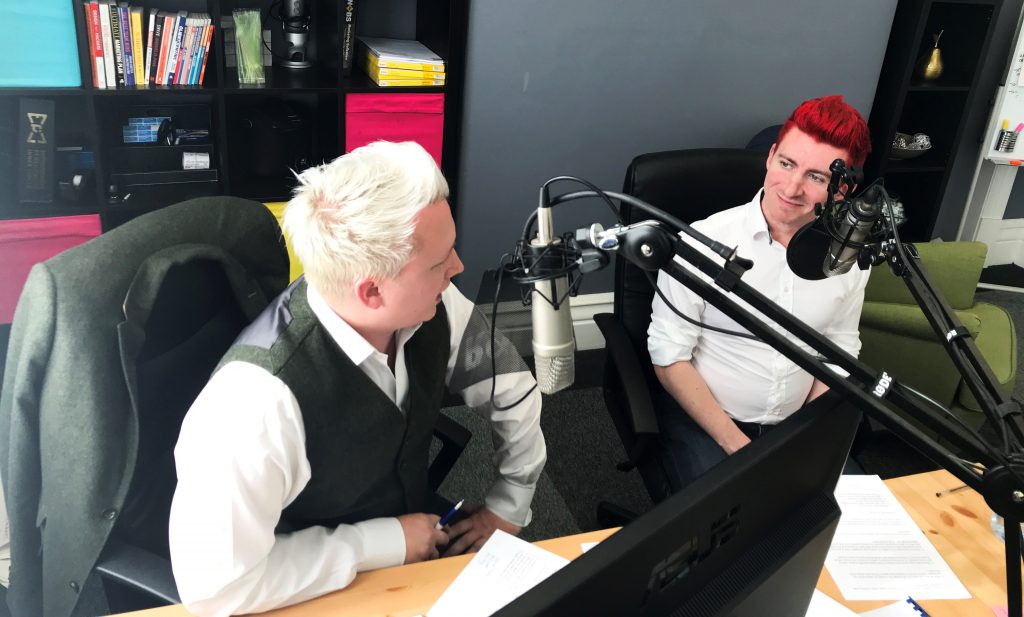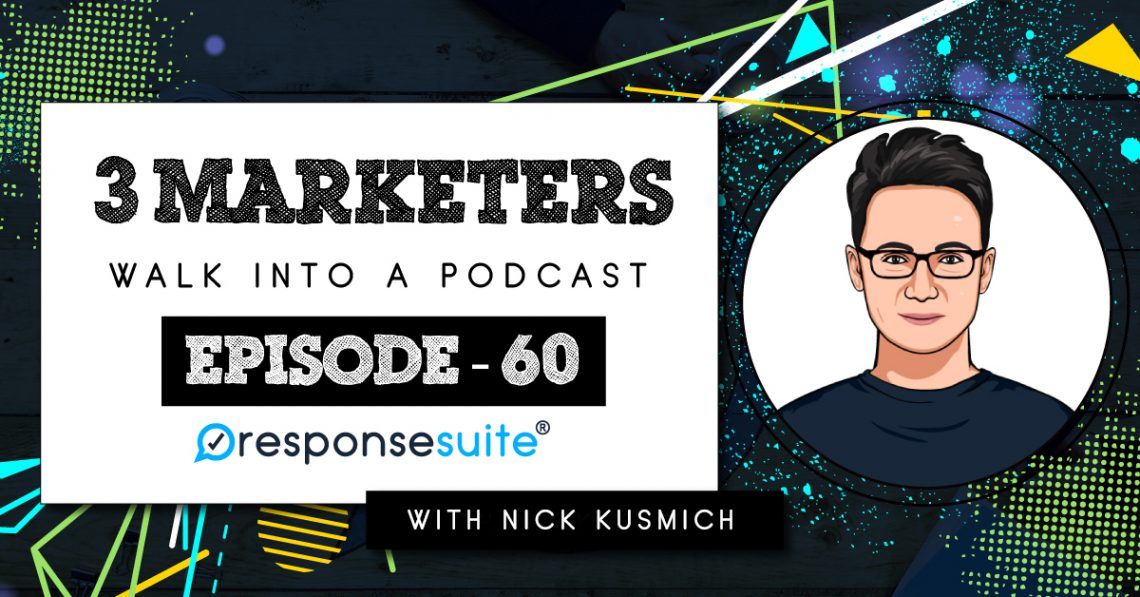Facebook ads, the powerful yet mysterious marketing tool that has the potential for so much success but also SO much wasted money if you don't know what you're doing.
Nick Kusmich is an absolute ninja when it comes to scaling Facebook ads for top results, and he's here on the podcast to share his fool-proof 4 step strategy!
Subscribe now on your favourite podcast player:

When you're talking about scaling Facebook ads, what do you really mean?
- I think that term scaling is thrown around quite loosely.
- When we are talking about scaling we are talking about people who are prepared to sustain anywhere from $50,000-100,000 a day spend that’s a whole other league type scaling.
- Other people who use that term they have an ad that works but just want to make it better and we would call that optimization.
Is it true that you can’t just turn up your ad spend and things will perform better?
- We know that the Facebook algorithm is very temperamental.
- Any time you edit an ad you are resetting the Facebook algorithm and Facebook starts all over again to try to optimize your campaign and more often than not things go bad.
- If you don’t scale intelligently you will basically be throwing money down the toilet.
Where does budget scaling fit into your four tiers?
- We call this pace budgeting.
- There are two rules to this. We have to realise that when we make an edit to an ad Facebook resets and attempts to reoptimize.
- The second thing is it takes FB 24hrs to reestablish where it's at in the algorithm and the worst thing you can do is make a change.
- When you have an ad set that’s working and you are happy with the numbers, be patient.
- The rule of thumb is 15-20% budget increase and do that every other day.
At what point do you stop raising the budget?
- This is contingent on the magic metric. Before you go into any campaign you need to have a red, yellow, green light metric. It could be the cost per opt-in etc.
- Let’s say that cost per opt-in and my magic metric is $5 if I am running an ad and I am getting $2 opt-ins that’s a green light and if they are coming in at $10 opt-ins that’s a red light.
- If we are pace budgeting and we start to increase our opt-in price starts to rise. What we are watching for is when it goes from a green light to a yellow light at that point we want to scale back and turn the budget down 40%.
- Once your ad sets are working you can just let it go, watch it but don’t mess with it.
So, what is phase two?
- Phase two is called duplicate. This is based on spreading your budget across multiple ad sets.
- We literally can duplicate an ad set that is working and run it through phase 1 again to see how far we can push it. The case and point is that all the ones that are working from phase 1 you will duplicate and start pace budgeting and see how far you can push them without changing them.
After we’ve done those two phases what do we do next?
- The third phase is called variation. This is when you start scaling wider or horizontally. Having variations of your ads.
- At any given time we are running two image or creative variations of the same ad to see which one will pull better.
- When you are variating you are split testing the ads that work best. You can have 3, 4, 5 variations of the same ad and now you are scaling horizontally.
What is the fourth phase?
- Most people never have to get to this phase. Phase 4 is called objectifying. When you set up your campaigns FB asks you “what type of objective are you going for?”
- For the most part, we want to go for the objective that is most likely going to work for us.
I follow these three phases and it’s starting to go well. How do I know how far I can take this? What’s the sign that this campaign is probably scaled far as it’s going to go?
- I think there are two things to keep in mind. With the red yellow green light principle that kind of keeps things simple. You will probably start seeing it going from green to yellow, yellow to red.
- The second thing is “A winning campaign is a winning campaign is a winning campaign”. If you have a green light campaign and all of a sudden it turns yellow and then red. Instead of starting over you can just turn them off for a month or two and then bring them back.
- Anything that has been working for you for a good amount of time if it turns red don’t freak out just give it a break and bring it back up later. It is important to have a suite of front end offers that we can rotate.
How do we monitor and track all of this?
- We follow the rule one ad per ad set and each campaign is a front end offer. Our naming structure is copy + image + audience.
- We are looking at two things the magic metric and the naming structure. That allows us to quickly get an idea if we are green, yellow, or red lighting and which ads.


A book that you would recommend…
Steal Like An Artist by Austin Kleon
What is your top success habit?
Anything that doesn't involve business, and for me that's jiu-jitsu.
Who do you look up to?
The guys from the Digital Marketer squad.
What are your favourite apps right now?
ClickUp and Station for me.
Here’s the big one… who do you like more, Rob or Kennedy?
It depends on who I’m talking to and if the other guy is in the room!
Finally, where can folks go to find out more about you?
Nicholaskusmich.com or Nicholaskusmich.com/thecouncil





Leave a Comment